Research Article Open Access
Burden of Chronic Low Back Pain with a Neuropathic Pain Component: Retrospective Chart Review and Cross-sectional Survey among Adults Seeking Treatment in the United States
| Alesia Sadosky1*, Caroline Schaefer2, Rachael Mann3, Bruce Parsons4, Rebecca Baik5, Srinivas Nalamachu6, Brett R Stacey7, Michael Tuchman8, Alan Anschel9 and Edward Nieshoff10 | |
| 1Pfizer, Inc. 235 East 42nd Street New York, NY 10017, USA | |
| 2Covance Market Access Services Inc. 9801 Washingtonian Blvd 9th Floor, Gaithersburg, MY, USA | |
| 3Covance Market Access Services Inc. 10300 Campus Point Drive, Suite 225, San Diego, USA | |
| 4Pfizer, Inc. 235 East 42nd Street, New York, USA | |
| 5Covance Market Access Services Inc. 9801 Washingtonian Blvd 9th Floors, Gaithersburg, MY, USA | |
| 6International Clinical Research Institute 8675 College Blvd, Suite 150, Overland Park, USA | |
| 7Oregon Health & Science University Mail Code CH4P, 3303 SW Bond Ave, Portland, USA | |
| 8Palm Beach Neurological Centers 3365 Burns Road, Suite 203, Palm Beach Gardens, USA | |
| 9Rehabilitation Institute of Chicago, 345 E. Superior St., Chicago, USA | |
| 10Rehabilitation Institutes of Michigan/Wayne State University, USA | |
| Corresponding Author : | Alesia Sadosky Pfizer Inc. 235 East 42nd Street New York, NY 10017 USA Tel: 212-733-9491 Fax: 212-309-5294 E-mail: alesia.sadosky@pfizer.com |
| Received August 13, 2014; Accepted October 31, 2014; Published November 02, 2014 | |
| Citation: Sadosky A, Schaefer C, Mann R, Parsons B, Baik R, et al. (2014) Burden of Chronic Low Back Pain with a Neuropathic Pain Component: Retrospective Chart Review and Cross-sectional Survey among Adults Seeking Treatment in the United States. J Pain Relief 3:163. doi: 10.4172/2167-0846.1000163 | |
| Copyright: © 2014 Sadosky A, et al. This is an open-access article distributed under the terms of the Creative Commons Attribution License, which permits unrestricted use, distribution, and reproduction in any medium, provided the original author and source are credited. | |
Visit for more related articles at Journal of Pain & Relief
Abstract
Background: Chronic low back pain (CLBP) is highly prevalent, and between 35% and 55% of individuals with CLBP suffer from a neuropathic pain component (CLBP-NeP). Limited data on the economic and patient burden in this CLBP subgroup have been published.
Methods: This observational study aimed to characterize burden among CLBP-NeP subjects (n=106) recruited during routine physician visits in the United States. Subjects completed a questionnaire to capture pain severity, function, health status, sleep, anxiety/depression, lost productivity, demographics, employment status, and out-of- pocket expenses. Investigators completed a 6-month retrospective chart review to capture clinical characteristics and CLBP-NeP-related healthcare resource use. Based on average pain severity scores, subjects were stratified into mild, moderate, and severe pain groups. Summary statistics were calculated, and differences across severity groups were evaluated.
Results: Subjects’ mean (SD) age was 54.1 (11.9) years; 57.5% were female. Most subjects had at least one comorbidity (87.7%); common comorbidities included sleep disturbance/insomnia [58.5%], depressive symptoms [51.9%], headache/migraine [46.2%], and anxiety [45.3%]. Mean (SD) pain severity score was 6.0 (1.77). Outcomes were worse among subjects with greater pain for health status, function, and sleep. Overall, 23.6% of subjects were employed for pay; 32.1% reported being disabled due to CLBP-NeP. Among those employed, lost productivity due to CLBP-NeP (62.3% overall work impairment) was substantial. Nearly all (98.1%) subjects were prescribed one or more medications for CLBP-NeP, including opioids (81.1%), muscle relaxants (33.0%), and antiepileptics (28.3%). Mean adjusted annualized direct and indirect costs per subject were $8,305 and $30,496 (mild), $10,189 and $26,428 (moderate), and $11,880 and $25,051 (severe), respectively, with no significant differences observed.
Conclusions: Patient and economic CLBP-NeP burden is high despite active management. Sub-optimal outcomes were associated with greater pain severity. Findings point to unmet need and indicate CLBP-NeP burden is experienced in terms of poor function and lost productivity.
| Keywords |
| Chronic low back pain; Neuropathic pain; Burden of illness; Quality of life; Patient-reported outcomes; Healthcare resource use; Costs; Productivity |
| Introduction |
| Neuropathic pain (NeP) is defined as pain caused by a lesion or disease of the somatosensory nervous system, and differs from inflammatory or nociceptive pain, which is pain that arises from actual or threatened damage to non-neural tissue and is due to the activation of nociceptors [1]. For individuals with chronic low back pain (CLBP), both nociceptive and neuropathic components of pain may be present; the nociceptive component results from activation of nociceptors that innervate ligaments, small joints, muscle and tendons, while, in the same individual, neuropathic processes may be evident [2-4]. Among individuals with CLBP, it is estimated that between 35% and 55% suffer from a neuropathic pain component (CLBP-NeP) [4- 6]. Thus, CLBP-NeP is a common type of NeP, with 2,100 per 100,000 affected individuals in the United States (US) [6,7]. Some of the most frequently reported symptoms among individuals with CLBP-NeP are hypoesthesia, allodynia, and radiating pain [3]. CLBP populations have been well-studied over the past two decades, and the research indicates that CLBP is associated with poor function, high healthcare resource use, reduced productivity, and substantial costs [3,8-11]. Significantly greater humanistic and economic burden and lower patient satisfaction with treatment are observed as pain severity increases [10]. While studies of CLBP populations are informative, it is not clear to what extent the results can be generalized to the CLBP-NeP population. Despite the high prevalence of CLBP-NeP, only two studies in Germany and the US have attempted to assess the burden among individuals with CLBP-NeP [3,11]. Freynhagen ,et al. administered the painDETECT and other validated measures to approximately 8,000 CLBP subjects in Germany [3]. In the cohort of CLBP subjects, close to 40% had a NeP component, and those CLBP-NeP subjects reported greater pain intensity, higher rates of depression, panic/anxiety and sleep disorders, worse functionality, and higher healthcare resource use compared to those with CLBP alone [3]. Mehra, et al. conducted a US claims database study using International Classification of Diseases, Ninth Revision (ICD-9) codes to identify and compare individuals with CLBP alone versus CLBP-NeP and also found higher healthcare resource use among those with CLBP-NeP; however, the NeP component was not confirmed by a practicing clinician [11]. In addition, Mehra, et al. captured all-cause healthcare resource use and costs, not costs specific to NeP [11]. The current study is unique and contributes new information to the current literature by comprehensively assessing both the humanistic and economic burden attributable to CLBP-NeP. Data on clinical assessment, patient self-reported pain severity, the impact of CLBP-NeP on health status, function, and productivity, as well as CLBP-NeP-related healthcare resource use and costs, are collected and results are examined overall and by pain severity. |
| Materials and Methods |
| Data collection |
| This cross-sectional, observational study recruited a convenience sample of CLBP-NeP subjects between October and November, 2011 from 16 community-based physician practices across the US, including 6 pain specialists, 4 general practitioners/primary care physicians (GP/PCP), 3 neurologists, 2 endocrinologists, and an infectious disease specialist. The CLBP-NeP subjects were recruited as part of a larger observational study assessing the burden of neuropathic pain; previous publications have reported data from the overall NeP sample, including certain characteristics of the CLBP-NeP sub-group [12,13]. This analysis presents detailed results from the CLBP-NeP sub-group. The study was approved by a central Institutional Review Board (IRB), Concordia Clinical Research (Cedar Knolls, NJ), in accordance with the ethical principles originating from the Declaration of Helsinki and in compliance with Good Clinical Practice. Sites were asked to identify eligible subjects with CLBP-NeP as they presented for routine office visits. Sites screened each patient with NeP who presented for an office visit during the study period to assess eligibility. Those eligible for enrollment were adult subjects (≥18 years) diagnosed with CLBPNeP, defined as subjects with low back pain persisting ≥3 months with a confirmed NeP component based on results from validated NeP screening tools ≥6 months ago, and who also were managed at the physician’s practice for ≥6 months. Subjects also were required to read and understand English, be willing and able to provide written informed consent, and must have experienced symptoms due to neuropathy for ≥3 months prior to enrollment. Subjects were not eligible for enrollment if they participated in an investigational drug study in the 6 months prior to enrollment; had a serious or unstable medical or psychological condition that, in the opinion of the physician, would compromise participation in the study; or had a concomitant illness unrelated to CLBP-NeP that may confound the assessment of CLBP-NeP (e.g., fracture, lupus, rheumatoid arthritis). Given the study objective to comprehensively assess CLBP-NeP burden in the US, data were collected via a self-administered subject questionnaire and a 6-month retrospective chart review conducted by the participating physician or site coordinator. At enrollment, subjects completed the questionnaire comprised of items capturing sociodemographics, non-prescription treatments used to manage CLBP-NeP over the past 4 weeks, out-of-pocket CLBP-NeP costs (i.e., medical care, child care, help with house and/or yard work, and help with activities of daily living) over the past 4 weeks, changes in employment status (i.e., disability, unemployment, early retirement, and reduced work schedule) due to CLBP-NeP, as well as a series of validated patient-reported outcome measures of pain severity and interference with function[14], anxiety and depression [15,16], physical and mental health status [17], general health status [18], sleep [19], and NeP-related lost productivity and activity impairment [20]. Each of these validated measures is described in Table 1. The participating physician or site coordinator then conducted a 6-month retrospective chart review and completed the clinical case report form to capture clinical characteristics (e.g., symptom duration, time since CLBP-NeP diagnosis, comorbid conditions) and treatment patterns/healthcare resource use for the management of CLBP-NeP over the past 6 months (i.e., prescription medications, healthcare provider (HCP) office visits, office-based (outpatient) tests or procedures, emergency room (ER) visits, hospital outpatient visits, and hospitalizations). |
| Costing algorithms |
| Direct medical costs to payers attributable to CLBP-NeP included HCP visits for CLBP-NeP, including visits to physicians and nonphysician HCPs, prescription medications for CLBP-NeP, portable transcutaneous electrical nerve stimulation (TENS) unit and supplies, office-based (outpatient) tests and procedures for CLBP-NeP, ER visits for CLBP-NeP, hospital outpatient visits for CLBP-NeP, and hospitalizations for CLBP-NeP. Direct out-of-pocket costs to subjects related to CLBP-NeP included medical care, child care, help with house and/or yard work, and help with activities of daily living. Indirect costs related to CLBP-NeP included overall work impairment (comprised of absenteeism and presenteeism) as measured using the WPAI and changes in employment status (i.e., disability, unemployment, early retirement, and reduced work schedule) due to CLBP-NeP. |
| Standard costing algorithms were used to assign unit costs (2012 US $) to all healthcare resource use and lost productivity, with the exception of out-of-pocket costs to subjects. The subject-reported outof- pocket costs did not need to be monetized. Unit costs for healthcare resources were based on fiscal year 2012 Medicare fee schedules (specifically, Medicare Physician Fee Schedule, Medicare Hospital Outpatient Prospective Payment System, and Medicare Hospital Inpatient Prospective Payment System) and 2012 Redbook discounted average wholesale price (plus a dispensing fee) [21]. Indirect costs were calculated for subject-reported lost productive time using the average hourly wage values obtained through the Bureau of Labor Statistics (BLS) [22] and average monthly disability payment from the Social Security Administration (for subjects disabled due to CLBP-NeP) [23]. |
| Statistical analyses |
| The data were analyzed using PC SAS® software version 9.1.3 (SAS Institute, Cary, NC). Summary means, standard deviations (SD), medians, and ranges were calculated for continuous variables, and frequency distributions [n (%)] were calculated for categorical variables. Statistical significance was evaluated at the 0.05 significance level. All analyses have been performed by pain severity level. Subjects were classified into one of three pain severity levels based on their BPISF Pain Severity Index scores: Mild (0-3), Moderate (4-6), and Severe (7-10) [24,25]. Two subjects are not included in the analyses by pain severity level as they did not respond to all required items needed to calculate the BPI-SF Pain Severity Index. While the means and SDs are presented for continuous variables, the p-value presented evaluating the association between these variables and pain severity is from the Kruskal-Wallis test and is therefore based on the ranks. Fisher’s exact test was used to evaluate the association between pain severity and categorical variables. The association between pain severity and costs of CLBP-NeP within the CLBP-NeP sample was evaluated using multiple (adjusted) linear regressions. For the adjusted model, we used forward stepwise regression with the following pool of covariates: age, sex, race, ethnicity, pain severity, employment status (employed for pay/disabled/retired/unemployed/other), ability to walk, insurance coverage (Yes/No), CLBP-NeP prescription coverage (Yes/No), worker's compensation, time since diagnosis, and comorbid conditions. |
| Results |
| Demographic and clinical characteristics |
| Table 2 presents the demographic and clinical characteristics of the overall sample and by pain severity, unless otherwise noted. The mean (SD) age of the 106 CLBP-NeP subjects was 54.1 (11.9) years (mild: 61.2 (6.6), moderate: 55.2 (10.7), severe: 52.2 (13.5); p=0.0762). Most subjects (57.5%) were female. Pain severity was moderate, on average (BPI-SF Pain Severity Index: 6.0 (1.8)). Most (92.5%) subjects reported moderate or severe pain (vs. 5.7% with mild pain) (Table 3). Over three-quarters of subjects (87.7%) had at least one comorbid condition. Subjects with at least one comorbid condition had an average (SD) of 3.9 (2.3) comorbidities. Although the difference across severity levels was not statistically significant, an increasing trend was observed both in the percentage with comorbidities and the mean number of comorbidities for those subjects. In the overall CLBP-NeP cohort and the severe pain groups respectively, the most common comorbid conditions were sleep disturbance/insomnia (58.5% and 67.4%), depressive symptoms (51.9% and 60.5%), headache/migraine (46.2% and 48.8%), and anxiety (45.3% and 53.5% Figure 1). Subjects had been diagnosed with CLBP 9.6 years prior to enrollment in this study, on average, and there was a difference of 2.6 years (31.7 months) between the subject’s first experience of NeP symptoms and diagnosis by a physician. Less than a quarter (23.6%) of subjects was employed for pay; the majority of subjects (51.9%) reported a current employment status as disabled/on disability. |
| Health-related quality of life |
| PCS and MCS scores were 27.2 (6.9) and 39.0 (12.1), respectively; well below the population norms of 49.7 and 49.5 [26], respectively. While the PCS scores were similar, the MCS scores were statistically significantly different across pain severity levels (p=0.0408); subjects with severe pain had a mean MCS score more than 6 points below those with moderate pain (Figure 2). Health status for the CLBP-NeP cohort as measured by the EQ-5D-3L (0.50 [0.21]) was also below the population norm of 0.87 [27]. Mean health utility scores decreased among those with greater pain severity with the lowest mean score of 0.38 reported among those with severe pain; the difference was statistically significant across pain severity levels (p<0.0001) (Figure 3). |
| Mean BPI-SF Pain Interference Index score was moderate: 6.6 (2.2) for the overall CLBP-NeP cohort; scores increased among those with greater pain severity, and this difference was statistically significantly across pain severity levels (p<0.0001) (Table 3). Overall, the pain interference with function items most impacted by NeP were normal work, sleep, and enjoyment of life (mean scores in these domains were above 7.0 for the overall cohort and the severe pain group). CLBP-NeP subjects reported substantial sleep problems (Overall Index mean: 57.4 (18.3)), with the greatest sleep problems reported by those with severe pain. Differences across pain severity levels were statistically significant (p=0.0052) (Figure 4). Over half (62.3%) of CLBP-NeP subjects experienced some level of anxiety and 71.7% experienced some level of depression (Table 3). Close to one-fifth (18.6%) of subjects with severe pain also had severe anxiety. |
| Healthcare resource use |
| Table 4 presents the healthcare resource use of the overall sample and by pain severity. Almost all (98.1%) of the overall CLBP-NeP cohort were prescribed at least one medication for the treatment of CLBP-NeP in the past 6 months (Figure 5). Subjects were prescribed on average (SD) 2.5 (1.3) medications over the past 6 months; this was similar across pain severity levels. The medication classes most prescribed in the overall CLBP-NeP cohort (Figure 5) and in the severe pain group, respectively, were opioids (81.1% and 83.7%), muscle relaxants (33.0% and 37.2%), antiepileptics (28.3% and 25.6%), and non-steroidal antiinflammatory drugs (NSAIDs) (14.2% and 14.0%). Over half (55.7%) of the overall cohort reported taking non-prescription treatments in the past four weeks for their CLBP-NeP; the most frequently used were vitamins (26.4%), ibuprofen (23.6%), and acetaminophen (16.0%). Subjects reported taking on average (SD) 1.1 (1.3) non-prescription treatments over a four-week period; across pain severity groups the mean number of non-prescription treatments per subject was similar. |
| CLBP-NeP subjects had about 5 physician office visits related to their CLBP-NeP, on average, in the six months prior to enrollment, or on average one physician office visit every 5-6 weeks. Almost threequarters of the subjects (73.6%) had three or more physician office visits in the six months prior to enrollment. Over the course of these office visits, an average of 1 to 2 office-based tests or procedures were performed per subject for the management of CLBP-NeP, with more tests or procedures per subject among those with more severe pain. Five subjects (1 with moderate pain and 4 with severe pain) had at least one CLBP-NeP-related ER visit in the six months prior to enrollment. There were no hospitalizations or hospital outpatient visits reported in this study period. |
| Lost productivity |
| Table 5 presents data on lost productivity for the cohort and by pain severity. Half (50.9%) of the overall CLBP-NeP cohort reported having no change in employment status due to CLBP-NeP. Almost one-third (32.1%) of the overall CLBP-NeP cohort reported their employment status as disabled/on disability due to their CLBP-NeP. The proportion of subjects who were disabled due to CLBP-NeP was highest (41.9%) among those with severe pain. |
| Among those employed for pay, cverall work impairment (absenteeism and presenteeism) due to CLBP-NeP was substantial: mean (SD) 62.3% (18.0%); overall work impairment was ≥60.0% in both the moderate and severe pain groups (Figure 6). Across all subjects, overall activity impairment due to CLBP-NeP also was substantial: mean (SD) 64.0% (25.7%); activity impairment increased/worsened among subjects with more severe pain (mild=45.0%, moderate=56.5%, and severe=76.4%), and the difference across pain severity levels was statistically significant (p<0.0001) (Figure 6). |
| Costs |
| Unadjusted total mean (SD) annualized direct costs were $10,914 ($9,654) per subject. Annualized prescription medication costs were the primary driver of the total direct costs, making up, on average, 53.4% of the total unadjusted mean annualized total direct costs. Unadjusted total mean (SD) annualized indirect costs per subject were $25,601 ($25,426) for the overall CLBP-NeP cohort. The majority (67.8%) of the costs were driven by disability due to CLBP-NeP. Both unadjusted total mean annualized direct and indirect costs, although not significantly different across pain severity levels (p=0.1195 and p=0.7274, respectively), increased among those with greater pain severity (direct: $5,114 [mild], $10,878 [moderate], $11,943 [severe]; indirect: $20,454 [mild], $25,591 [moderate], $27,523 [severe]). After adjustment, mean (SD) annualized total per subject costs were $37,643 (mild), $38,626 (moderate), and $35,853 (severe). No significant differences were observed for pairwise comparisons between the pain severity groups for adjusted average annualized direct or indirect costs (Figure 7). |
| Discussion |
| This is the first study to comprehensively evaluate the overall burden of CLBP-NeP among US adults by pain severity, inclusive of sociodemographics; clinical characteristics; and the impact of CLBPNeP on health status, functioning, sleep, anxiety, depression, healthcare resource use, lost productivity, and direct and indirect costs. A recent US cross-sectional study of patient-reported outcomes, medication use, and costs among individuals diagnosed with CLBP had a comparable sample to the current study with regards to the gender distribution (51% vs. 57.5% females, respectively) and mean age (54.8 vs. 54.1 years, respectively) [10]. The cross-sectional study of CLBP burden did not assess whether a NeP component was present for subjects in the sample; however, given the reported prevalence of NeP among those with CLBP, we can assume the sample included CLBP subjects with and without a NeP component. In contrast, all subjects in the current study were confirmed to have CLBP-NeP. In the current study the vast majority (92.5%) had moderate or severe pain, compared to 71.5% in the CLBP cross-sectional study [10]. Less than a quarter (23.6%) of CLBP-NeP subjects in the current study were employed for pay compared to more than half (52%) of the sample in the cross-sectional study of CLBP burden [10]. CLBP-NeP subjects in the current study also reported worse general health status (health state utilities) compared to individuals assessed in the cross-sectional study of CLBP burden [10]. Taken together, the results of the current study compared to those reported previously suggest the presence of a NeP component results in burden that is incremental to that conveyed by the underlying CLBP. Despite the fact that the CLBP-NeP subjects in the current study were actively managed, mean scores for the SF-12 PCS and MCS, health utilities, and MOS Sleep Problems Index were well below population norms [19,26,27]. The low mean PCS scores suggest that even among those with mild CLBP-NeP, physical health status is substantially impaired. That said, subjects with severe pain consistently had the worst scores on each of these patient-reported outcomes, highlighting the marked humanistic burden in this subgroup. Freynhagen, et al. [3] also reported a heavy burden among CLBP-NeP patients in Germany in terms of high pain severity, depression, and anxiety as well as poor sleep outcomes; however, because Freynhagen, et al. [3] used different measures to assess these outcomes than we did in the current study, it is difficult to make direct comparisons. CLBP-NeP subjects in the current study had high healthcare resource use attributable to CLBP-NeP, which resulted in high total direct medical costs per subject across pain severity groups. The major driver of the direct medical costs in the current study was prescription medications across pain severity groups. These findings provide additional support to previous studies in the US and Germany that found subjects with CLBP-NeP had higher healthcare resource use compared to subjects with CLBP alone [3,11]. It is important to consider that opioids were most frequently prescribed medication class in our sample in light of recent public health policy changes, including plans to restrict opioid prescriptions in emergency rooms at New York City’s 11 public hospitals [28] and the Food and Drug Administration’s recent vote in favor of rescheduling hydrocodone products from Schedule III controlled substances to Schedule II controlled substances [29]. In a German study, 44.5% of individuals with CLBP-NeP had three or more physician office visits in the previous 4 weeks compared to 25.6% with CLBP alone [3]. In the current study, 73.6% had three or more physician office visits in the six months prior to enrollment. The high healthcare resource use and high pain levels observed in the current study and in previous research speak to an unmet need in the management of CLBP-NeP. One aspect of the patient burden that has not been previously explored and is an important finding of this study is the impact of CLBP-NeP on productivity and employment. More than three-quarters of the CLBP-NeP subjects in our study were not employed, and over half were disabled. Of the 55 disabled subjects, 34 (61.8%) of those were disabled due to their NeP. Overall, 40.6% reported some change in employment status due to CLBP-NeP, with the highest proportion among those with severe pain. Indirect costs, comprised of absenteeism and presenteeism, and changes in employment status due to CLBP-NeP, accounted for the majority of total costs, suggesting that lost productivity due to CLBP-NeP imposes a substantial economic burden on both patients and society beyond what health insurers pay for medical care. Changes in employment status, particularly disability, due to CLBP-NeP, accounted for the majority of the indirect costs, followed by lost productivity among the employed, except in the mild pain group where early retirement due to CLBP-NeP was the second greatest driver of indirect costs. Of note, total indirect costs were substantial across all pain severity levels. These findings are unique; while claims database analyses can capture direct costs among specific populations (e.g., employed populations from private payer claims data or elderly populations from Medicare claims data), this study was designed to capture the indirect costs to society among a cross-section of CLBP-NeP patients, including those employed and not employed for pay. |
| Limitations |
| There are some limitations inherent to this study. Subjects were actively seeking medical care for their CLBP-NeP. Further, this study enrolled subjects diagnosed at least six months prior to consent who had been managed at the physician’s practice for the same time period. As such, these findings may not be generalizable to others with CLBP-NeP who is not seeking treatment. For example, there were just 6 subjects in the sample who reported mild pain; this suggests that many subjects in routine clinical practice have moderate to severe pain, but moderate to severe pain may be less prevalent among those not seeking care. This cross-sectional study required a retrospective review of medical records, which likely led to underreporting of healthcare resource use, particularly visits to other physicians, healthcare providers, or facilities, CLBP-NeP-related tests and procedures performed in other settings of care, and medications prescribed outside of the study site. Similarly, healthcare resource use data captured was based on the site’s assessment of healthcare resource use attributable to CLBP-NeP. It may have been difficult in some cases to distinguish NeP-related healthcare resource use from healthcare resource use due to the CLBP. |
| Costs were assigned to healthcare resource use using standard algorithms, which may have over- or underestimated costs. Lost productivity and out-of-pocket costs were based on subject recall, and may also have resulted in cost over- or under-estimation. Finally, while we report all data in the by severity analysis, the authors acknowledge that comparisons across the pain severity levels may be limited given the small mild pain sample. Specifically, in cases where we did not find statistical significance, it may be due to the small sample size which results in diminished power. For example, the higher average indirect cost per subject in the mild pain group may be inflated due to high costs among just a couple of subjects. However, we used non-parametric and exact tests due to the small sample size; thus, the results are conservative based on appropriate methods for the data. |
| Conclusion |
| The majority of subjects with CLBP-NeP in this study reported moderate or severe pain, which was associated with poor function, despite receiving active management. Health status and sleep were worse among subjects with greater pain severity. Further, healthcare resource use and costs, particularly indirect costs associated with CLBPNeP were substantial across pain severity levels. These findings point to unmet need in this condition and indicate that the burden of CLBPNeP is experienced in terms of poor function and lost productivity. |
| Competing Interests |
| This research was funded by Pfizer, Inc. Alesia Sadosky, and Bruce Parsons are paid employees of Pfizer, Inc. Rebecca Baik, Rachael Mann, and Caroline Schaefer are employees of Covance Market Access Services Inc who were paid consultants to Pfizer, Inc in the development and execution of this study and manuscript. Drs. Alan Anschel and Srivinas Nalamachu were paid investigators for the study, but were not financially compensated for their publication-related activities. Drs. Brett Stacey, Edward Nieshoff, and Michael Tuchman were not financially compensated for their collaborative efforts on this project, including publication-related activities and declare no potential conflict of interest. |
| Authors’ Contributions |
| AS, CS, RM, BP, BS, MT, and EN made substantial contributions to study conception and design. SN and AA were investigators in the study, making substantial contributions to the acquisition of data, and CS and RM contributed to study implementation and the acquisition of data. AS, CS, RM and RB made substantial contributions to data analysis, and AS, CS, RM, BP, SN, BS, MT, AA and EN made substantial contributions to the interpretation of data and results. CS, RM and RB drafted and revised the manuscript, and AS, BP, SN, BS, MT, AA and EN critically reviewed and revised the manuscript. All authors read and approved the final manuscript and agree to be accountable for all aspects of the work in ensuring that questions related to the accuracy or integrity of any part of the work are appropriately investigated and resolved. |
| Acknowledgements |
| We thank Gergana Zlateva, PhD, an employee of Pfizer, Inc, and Felicia Bergstrom, MSPH, and Shoshana Daniel, PhD, employees of Covance Market Access Services Inc who were paid consultants to Pfizer, Inc, for their contributions to the study design and analysis of the study data. This research was supported by Pfizer, Inc. |
References
- IASP. IASP Taxonomy: Pain Terms
- Baron R, Binder A (2004) [How neuropathic is sciatica? The mixed pain concept].Orthopade 33: 568-575.
- Freynhagen R, Baron R, Gockel U, Tölle TR (2006) painDETECT: a new screening questionnaire to identify neuropathic components in patients with back pain.Curr Med Res Opin 22: 1911-1920.
- Freynhagen R, Baron R (2009) The evaluation of neuropathic components in low back pain.Curr Pain Headache Rep 13: 185-190.
- Kaki AM, El-Yaski AZ, Youseif E (2005) Identifying neuropathic pain among patients with chronic low-back pain: use of the Leeds Assessment of Neuropathic Symptoms and Signs pain scale.RegAnesth Pain Med 30: 422-428.
- Galluzzi KE (2005) Management of neuropathic pain.J Am Osteopath Assoc 105: S12-19.
- Bennett GJ (1998) Neuropathic pain: new insights, new interventions.HospPract (1995) 33: 95-98, 101-4, 107-10 passim.
- Engel CC, von Korff M, Katon WJ (1996) Back pain in primary care: predictors of high health-care costs.Pain 65: 197-204.
- Ritzwoller DP, Crounse L, Shetterly S, Rublee D (2006) The association of comorbidities, utilization and costs for patients identified with low back pain.BMC MusculoskeletDisord 7: 72.
- Sadosky AB, Taylor-Stokes G, Lobosco S, Pike J, Ross E (2013) Relationship between self-reported low-back pain severity and other patient-reported outcomes: results from an observational study.J Spinal Disord Tech 26: 8-14.
- Mehra M, Hill K, Nicholl D, Schadrack J (2012) The burden of chronic low back pain with and without a neuropathic component: a healthcare resource use and cost analysis.J Med Econ 15: 245-252.
- Schaefer C, Mann R, Sadosky A, Daniel S, Parsons B (In Press 2014) Burden of illness associated with peripheral and central neuropathic pain among adults seeking treatment in the United States: a patient-centered evaluation
- Schaefer C, Sadosky A, Mann R, Daniel S, Parsons B (In Press 2014) Pain severity and the economic burden of neuropathic pain in the United States: BEAT Neuropathic Pain Observational Study. ClinicoEconomics and Outcomes Research.
- Cleeland CS, Ryan KM (1994) Pain assessment: global use of the Brief Pain Inventory.Ann Acad Med Singapore 23: 129-138.
- Snaith RP, Zigmond AS (1986) The hospital anxiety and depression scale.Br Med J (Clin Res Ed) 292: 344.
- Zigmond AS, Snaith RP (1983) The hospital anxiety and depression scale.ActaPsychiatrScand 67: 361-370.
- Ware JE, Kosinski M, Turner-Bowker DM, Sundaram M, Gandek B (2009). User's Manual for the SF-12v2 Health Survey Second Edition. QualityMetric, Incorporated.
- Rabin R, de Charro F (2001) EQ-5D: a measure of health status from the EuroQol Group.Ann Med 33: 337-343.
- Hays RD, Martin SA, SestiAM, Spritzer KL (2005) Psychometric properties of the Medical Outcomes Study Sleep measure.Sleep Med 6: 41-44.
- Reilly MC, Zbrozek AS, Dukes EM (1993) The validity and reproducibility of a work productivity and activity impairment instrument.Pharmacoeconomics 4: 353-365.
- Pharmacy Benefit Management Institute (2012) Prescription Drug Benefit Cost and Plan Design Report. Pharmacy and Drug Manufacturer Reimbursement.
- United States Department of Labor United States Bureau of Labor Statistics. National Occupational Employment and Wage Estimates United States.
- US Social Security Administration. 2011 Annual Statistical Supplement.
- Zelman DC, Dukes E, Brandenburg N, Bostrom A, Gore M (2004) Classification of mild, moderate and severe pain due to diabetic peripheral neuropathy based on levels of functional disability. J Pain 5: 114.
- Zelman DC, Dukes E, Brandenburg N, Bostrom A, Gore M (2005) Identification of cut-points for mild, moderate and severe pain due to diabetic peripheral neuropathy.Pain 115: 29-36.
- Ware JE, Kosinski M, Turner-Bowker DM, Sundaram M, Gandek B (2009) User's Manual for the SF-12v2 Health Survey Second Edition. QualityMetric, Incorporated.
- Luo N, Johnson JA, Shaw JW, Feeny D, Coons SJ (2005) Self-reported health status of the general adult U.S. population as assessed by the EQ-5D and Health Utilities Index.Med Care 43: 1078-1086.
- Hartocollis A (2013) New York City to Restrict Prescription Painkillers in Public Hospitals’ Emergency Rooms. The New York Times, January 11: A.
- Food and Drug Administration, CDER. (2013). Timeline of Selected FDA Activities & Significant Events Addressing Opioid Misuse & Abuse.
Tables and Figures at a glance
| Table 1 | Table 2 | Table 3 | Table 4 | Table 5 |
Figures at a glance
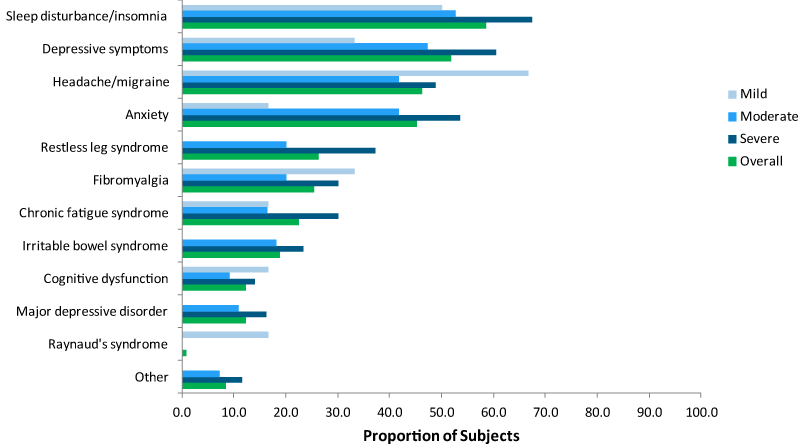 |
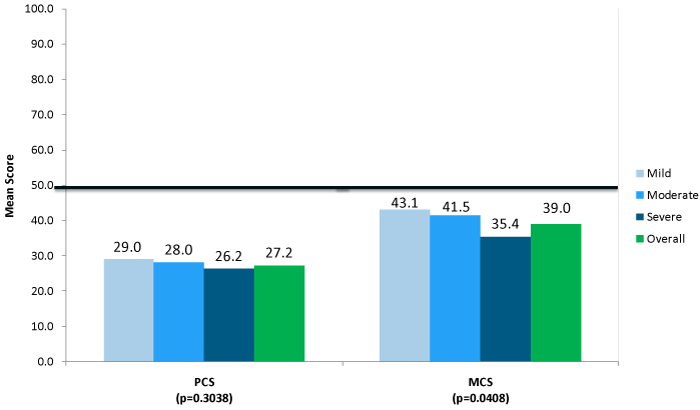 |
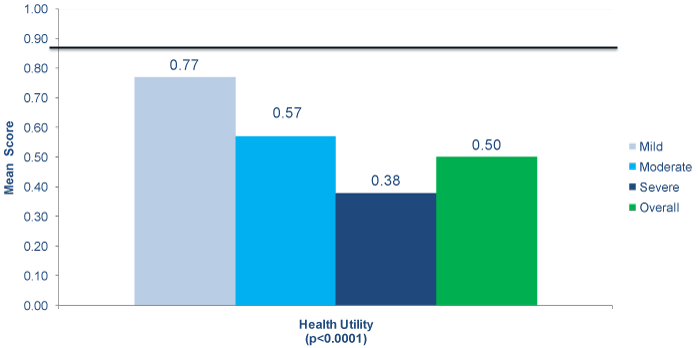 |
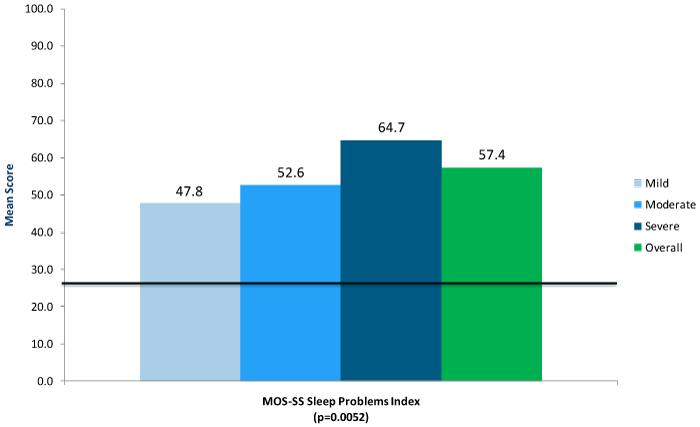 |
| Figure 1 | Figure 2 | Figure 3 | Figure 4 |
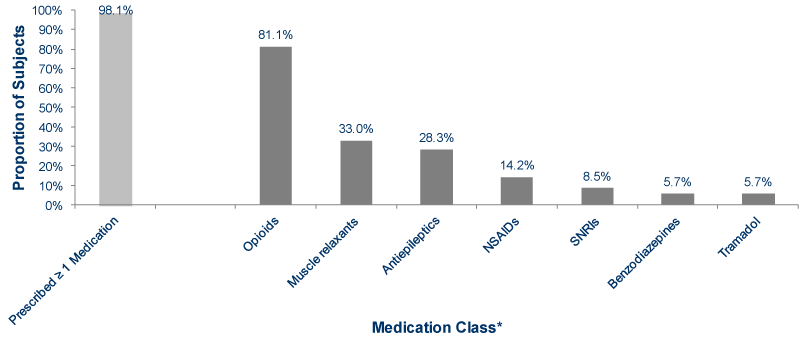 |
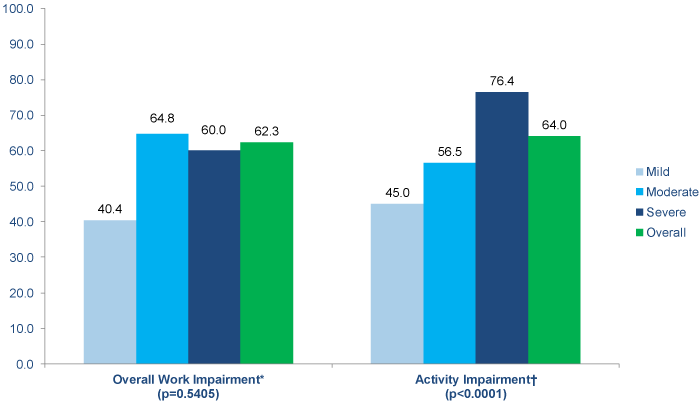 |
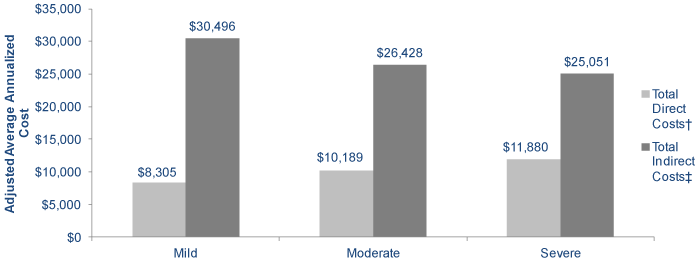 |
| Figure 5 | Figure 6 | Figure 7 |
Relevant Topics
- Acupuncture
- Acute Pain
- Analgesics
- Anesthesia
- Arthroscopy
- Chronic Back Pain
- Chronic Pain
- Hypnosis
- Low Back Pain
- Meditation
- Musculoskeletal pain
- Natural Pain Relievers
- Nociceptive Pain
- Opioid
- Orthopedics
- Pain and Mental Health
- Pain killer drugs
- Pain Mechanisms and Pathophysiology
- Pain Medication
- Pain Medicine
- Pain Relief and Traditional Medicine
- Pain Sensation
- Pain Tolerance
- Post-Operative Pain
- Reaction to Pain
Recommended Journals
Article Tools
Article Usage
- Total views: 14459
- [From(publication date):
November-2014 - Sep 01, 2025] - Breakdown by view type
- HTML page views : 9784
- PDF downloads : 4675
